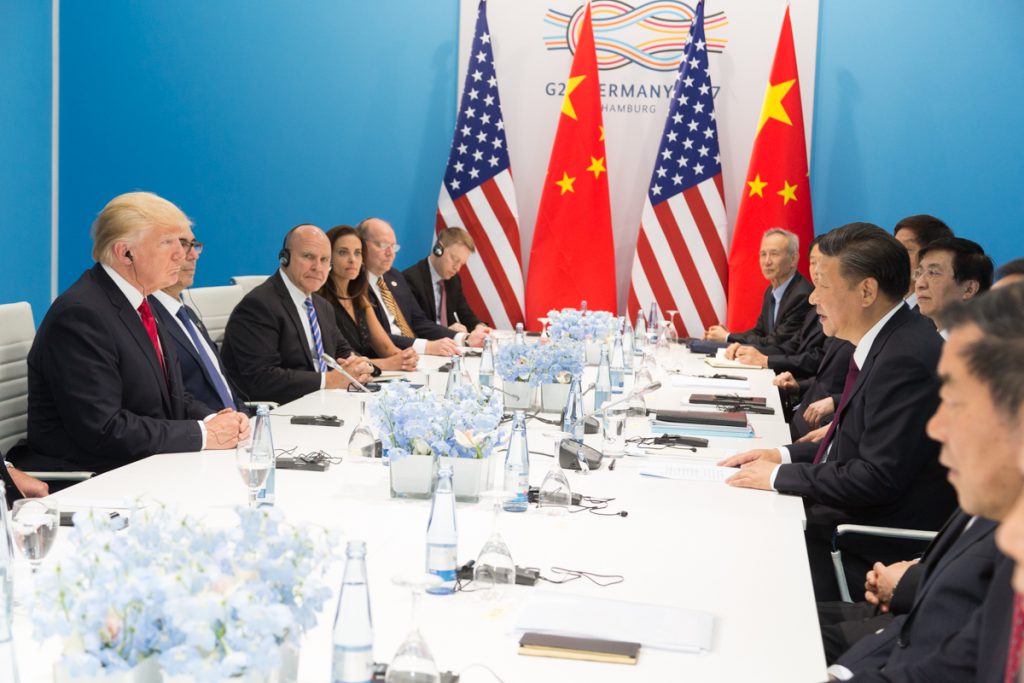
China’s promises to open trade and stop unfair practices have yet to be fulfilled.
Now that the United States-Mexico-Canada Agreement (USMCA) has finally been signed and can begin its way through Congress, President Donald Trump can focus on his upcoming meeting with Chinese President Xi Jinping.
Though predictions of Trump’s approach to his conference with Xi during the G20 Summit in Argentina have swung from conciliatory to adamant, China’s abusive trade actions must be met with resolve. Ahead of the meeting, we’re reflecting on the talks and trade actions this past year that will culminate in Saturday’s presidential parley.
Arrived in Argentina with a very busy two days planned. Important meetings scheduled throughout. Our great Country is extremely well represented. Will be very productive!
— Donald J. Trump (@realDonaldTrump) November 30, 2018
Need a refresher on U.S.-China trade relations since China entered the World Trade Organization in 2001 and the role of intellectual property theft? Check-out our explainer video below:
MARCH 8, 2018
The U.S. safeguards the domestic steel and aluminum industries as critical to national security while Chinese steel overcapacity gluts the market. The Trump administration applies tariffs of 25 percent on steel imports and 10 percent on aluminum imports with exemptions for some countries.
APRIL 18, 2018
China responds to U.S. tariffs on steel and aluminum imports by applying duties on $3 billion worth of U.S. imports, targeting agricultural products.
MAY 3, 2018
U.S. and Chinese trade delegations meet for negotiation, but the meetings end without resolution.
JUNE 15, 2018
The Trump administration announces plans to apply a 25 percent tariff on up to $50 worth of Chinese goods that have been identified as having profited from intellectual property theft. China responds with plans to impose tariffs on $50 billion worth of U.S. imports.
JULY 6, 2018
A 25 percent tariff on $34 billion worth of Chinese imports takes effect. China applies tariffs on $34 billion worth of U.S. imports.
AUGUST 23, 2018
A 25 percent tariff on an additional $16 billion worth of Chinese imports takes effect during formal trade talks between the U.S. and China.
SEPTEMBER 17, 2018
The Trump administration announces plans to apply a 10 percent tariff on $200 billion worth of Chinese goods and increase the tariff rate to 25 percent in January 2019. Should Beijing impose further tariffs in response, Trump promises to apply further tariffs on $267 billion worth of Chinese imports.
SEPTEMBER 18, 2018
China retaliates with plans to impose tariffs on $60 billion worth of U.S. products to take effect on Sept. 24.
SEPTEMBER 24, 2018
A 10 percent tariff on $200 billion worth of Chinese imports takes effect. The tariff rate will increase to 25 percent on Jan. 1, 2019. China’s previously announced tariff also takes effect.
NOVEMBER 1, 2018
President Trump and President Xi speak over the phone and forecast an optimistic outcome for a planned meeting during the G20 Summit at the end of November. However, the U.S. Justice Department continues to apply pressure on China, accusing a Chinese firm of unfair trade practices.
IN SUM
U.S. tariffs are currently applied on approximately $250 billion worth of Chinese imports. Meanwhile, China has imposed $110 billion worth of tariffs on U.S. exports to China at a rate of 25 percent.
An additional $267 billion worth of Chinese imports could be tariffed.
ON THE AGENDA FOR DECEMBER 1, 2018
The White House has signaled that the U.S. trade team plans to address Chinese theft of intellectual property in addition to trade barriers during Trump’s meeting with Xi over dinner this Saturday.
